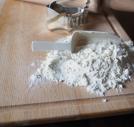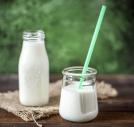Strawberry Glycemic Index - Is It OK to Eat This Fruit?
One of the more challenging aspects of life as a type 2 diabetic is managing your diet. There’s often the temptation to avoid certain foods altogether. While that may be wise in some instances, the fact is that you can have what you want, within reason.
Take the example of fresh strawberries. You love them, but think they may be off limits because of the carbohydrate content. Different sources tell you different things, so you’re not sure what to believe. Should you have strawberries now and then, or are they off the menu forever? Here’s some information that will help you make a responsible choice.
The Difference Between Processed Sweets and Natural Sweets
One of the first myths that you must let go of is that all carbohydrates are the same. Simple carbohydrates are often processed and lead to swift spikes in blood glucose levels. By contrast, complex carbohydrates take longer to absorb and are less likely to cause spikes.
What does this mean in terms of your fruit choices? Some fruits (as well as some vegetables) do contain simple carbohydrates, but they’re balanced with fiber and other nutritional elements that help to balance out the effect. Others provide complex carbohydrates along with other important nutrients and fiber.
Where do strawberries fall into the mix? Like most types of berries, strawberries contain complex carbohydrates. Right off the bat, that tells you they don’t contain the simple carbs that are typically found in candy bars and other forms of processed sweets. Those berries are genuinely better choices when you want something sweet.
Understanding the Glycemic Index and How It Works
Type 2 diabetics often rely on the glycemic index to help them make smarter food choices. First developed in 1981 by physicians Thomas Wolever and David Jenkins, the index assigns values to reasonable portions of different types of goods. Those values are based on the number of carbohydrates contained in each of those portions.
You’ll often hear the rankings of foods on the Index described as loads. Basically, you can use it to plan out meals and ensure the overall carbohydrate content is within the range your physician recommends. For example, you have a recommendation to limit the number of carbs per meal to 60. Using the details on the Index, you can come up with a meal plan that allows for an entree, two sides, a beverage, and even a dessert that’s at or below your carb limit.
This is to your benefit, since the recommended carbs per meal is designed to ensure you ingest enough carbohydrates to meet your body’s needs while lowering the risk of blood glucose spikes. While it can be a balancing act, preventing spikes slows the damage caused by your chronic condition, helps you feel better in general, and continue feel sated after a meal.
The ratings or loads found on the Index are grouped into three categories. Foods with rankings at 55 or lower are in the low category and are considered good choices for type 2 diabetics. They tend to take longer to digest and absorb, qualities that help to reduce the risk of spikes.
If a food has a rank or load of 56 to 69, it’s considered to be in the medium category. These goods do have more carbs and may absorb faster. While you don’t have to avoid them altogether, it’s good to limit your consumption.
Foods with a rank of 70 or more have the most carbohydrates and will digest at a faster rate. As with foods in the medium category, they aren’t off limits, but choosing to not consume them is a good idea. If you do, keep the portions small and only indulge once in a great while.
Where Do Strawberries Rank on the Glycemic Index?
Now that you have an idea of how the Index works, here’s some good news. Strawberries happen to fall into the low category. With a rank or load of 41, you can feel free to include them in your diet. In fact, the combination of nutritional content and the lower GI rank makes them one of the better choices that you can make.
It doesn’t hurt that strawberries are tasty and they happen to be versatile. There are plenty of ways to prepare them that don’t involve adding processed sugar or ingredients that are high in carbohydrates. Consider them to be on your short-list of foods that you can enjoy once or twice a week and not feel guilty.
Things to Know About the Nutritional Content of Strawberries
There’s a lot of discussion about making sure your food choices provide the nutrition that your body needs to remain healthy. What is it in strawberries that make them good choices along with the favorable GI rank? Here are some things you should know about the nutritional content.
First up, there’s the amount of vitamin C you’ll find in a single strawberry. It’s more than what you would ingest by consuming an entire orange. Consider a small serving of strawberries to be a good way to get the amount of this vitamin you need each day.
Fiber is another key benefit found in strawberries in abundance. More to the point, strawberries are great sources of soluble fiber. This fiber is helpful in slowing the absorption of sugar and further reducing the potential for blood sugar spikes.
Strawberries are also rich in polyphenols, a type of antioxidants that help aid in digestion, slow sugar absorption, and promote healthy brain function. There are some sources indicating that they aid in circulation, something that’s definitely important for type 2 diabetics.
Add in the fact that strawberries are fat-free, cholesterol-free, and lower in calories than many other choices, and you have a tasty fruit that packs quite a lot of value. You can see why strawberries are definitely something to consider for your diet.
Frequency and Portion Control Matters
Now that you know fresh strawberries are a good thing, feel free to include them in your diet. Remember that it is important to balance your consumption with including other foods that are low in carbs and high in nutritional content. You also need to think about the portion sizes and even the frequency that you choose to prepare dishes that include strawberries.
When it comes to managing the amount of carbohydrates in your diet, foods with lower carbs doesn’t mean you can enjoy them with abandon. You still need to adjust your thinking about what constitutes a reasonable portion size and stick with that new understanding.
For that reason, measure out the amount of strawberries that you will consume during a meal. It’s not as difficult as you may think. There are resources that will help you understand how many carbs are in a half-cup or a cup of sliced strawberries. When you see how much is actually included in a half-cup, you’re not likely to feel deprived.
Don’t forget about frequency either. While strawberries in reasonable portions are good choices, variety is one of the best ways to avoid getting bored with your diet. Since boredom increases the odds of cheating, you want to keep things interesting. Limiting consumption of strawberries to once or twice a week and rotating them with other low GI fruits will provide the variety you want.
How About Dried Strawberries?
Up to now, the focus has been on fresh strawberries. What if you want to have some dried ones instead? Fried fruit is certainly convenient and the texture is sometimes just right when you want a snack.
The good news is that you can enjoy dried strawberries. On average, you will find that a third of a cup will contain 31 grams of total carbs, or 28 grams of net carbs. In terms of a snack, that’s not bad. Much of the nutritional content found in fresh strawberries is also present in the dried variety.
When you look for dried strawberries, be mindful that some brands include sugar in the finished product. What you want is strawberries that are not infused with any type of sugar at all. In fact, you may want to invest in a dehydrator and prepare your own. Alternatively, many health food stores sell dried strawberries that contain no additives.
Will Frozen Strawberries Work?
Frozen strawberries are an excellent way to keep them on hand outside of growing seasons.
In order to make sure there’s no doubt about what you’re getting, read the labels carefully. What you want to find is that no additional sugars are contained in the product.
There may be preservatives that help to keep the texture and the taste more like fresh, but some brands do use additives that increase carb content as well as preserve the product. Check the information on the container before you buy.
Options for Dressing Up a Serving of Fresh Strawberries
Strawberries alone are excellent, but there are ways to dress them up without adding a lot of carbs. One approach is to serve them with plain yogurt. You can find brands that have around 4.7 grams of carbohydrates per 100 grams of whole-milk yogurt.
There’s also the possibility of serving strawberries with frozen whipped topping. Expect to find anywhere from 13 to 18 grams of carbs per cup. That’s likely more than you will use, but it gives you some idea of what to expect.
Small curd cottage cheese is another option to consider. A half-cup will include around 4.5 grams of carbs. Since that size serving provides a reasonable amount of protein, you can feel even better about your dessert.
The Bottom Line: You Can Eat Strawberries
Strawberries are not off the menu because you happen to be a type 2 diabetic. Assuming you have no adverse reactions to them and enjoy the taste, there are good reasons to make them one of the foods that you use in planning meals on a regular basis.
Experiment with different ways to prepare them and the odds of getting tire of this fruit will remain low.



































